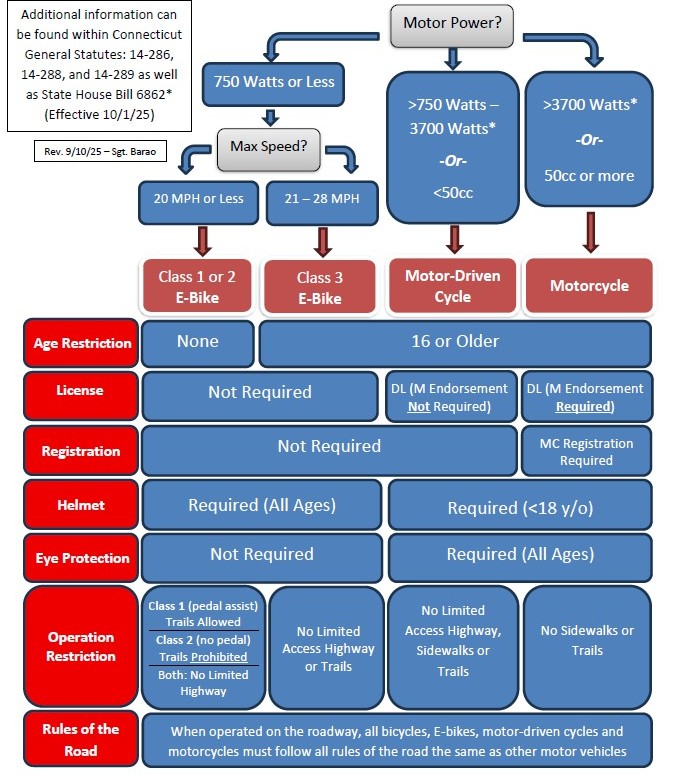
Know the Law
Learn about e-bike classes and local laws.
Connecticut classifies electric bikes:
Class 1: Pedal-assist only; the motor activates only when you pedal and stops assisting at 20 mph.
Class 2: Throttle-assisted; riders can use a throttle for power up to 20 mph.
Class 3: Pedal-assist only; provides assistance up to 28 mph.
Electric cargo bikes are generally classified under these same categories as long as they meet the power and speed limits. This system ensures that both traditional commuters and those hauling cargo can safely enjoy e-bike travel.
On October 1st 2025, further distinctions went into effect:
Motor-driven cycles: if the power is over 750 watts but under 3,500 watts, with no pedals
Motorcycles: if he power is over 3,500 watts
Requirements: helmet, license, insurance, registration
Regardless of age or class of e-bike, all e-bike riders are required to wear a helmet
Class 1,2,3 do not require a license, insurance or registration.
Motor-driven cycles : a valid driver's license is required, do not require insurance or registration.
Motorcycle: require a motorcycle license, insurance and DMV registration.
if a vehicle has been modified, with a different top speed, the owner is required to label the vehicle to reflect the modification.
Who and Where
Age restrictions: children under 16 are prohibited from operating Class 3 ebikes, but may be allowed as passengers if accompanied by an adult.
Roads: Electric bikes are allowed on most public roads and must adhere to the same traffic laws as traditional bicycles.
Bike Paths and Trails: While Class 1 and Class 2 e-bikes are generally permitted on multi-use trails and bike paths, Class 3 bikes are often restricted from these areas to protect non-motorized trail users.
Sidewalks: Generally, riding on sidewalks is not allowed unless local signage permits it, ensuring pedestrian safety.


